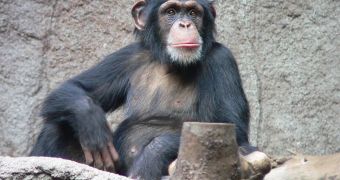A team of investigators announces that an ancient chimp virus has been revived so that researchers could study it in peace. Analyzing these organisms in the same manner as all other viruses are analyzed is extremely important for scientists.
Experts turn their attention to ancient pathogens which are known as endogenous viruses, and which had a long history. These organisms are now part of their host's genome.
Their DNA sequence is usually the only thing that can tell endogenous viruses apart from the genome, but the new investigation is making it possible to study this class of compounds without the need of sequencing.
CERV2, the chimpanzee endogenous retrovirus 2, can be found in the genome of monkeys, but not in that of humans. With the new accomplishment, looking at the material separately will become faster and easier.
The inactivity of CERV2 in humans seems to indicate that the two group separated long befor ethe monkeys became infected with the pathogen.
Existing anthropological records show that men and monkeys separated some 5 or 6 million years ago, and that the virus did not reach the new human population.
The new investigation was carried out by experts with the Laboratory of Retrovirology at the Rockefeller University, explains the leader of the lab, scientist Paul Bieniasz.
His group is conducting the investigations that are trying to determine how host defenses managed to stay one step ahead of the pathogens in this infection “game.”
Details of the new research appear in the latest issue of the esteemed scientific joural Proceedings of the National Academy of Sciences (PNAS).
The research team hypothesizes that the ancient humans developed a mechanism of fighting the invading cells before they reached the cells, and not after.
These are however only preliminary results, considering that the group just started working on CERV2.
Additional investigations will be conducted in the near future, PhysOrg reports, as the team attempts to gain additional insight into the history of retroviruses.

 14 DAY TRIAL //
14 DAY TRIAL //